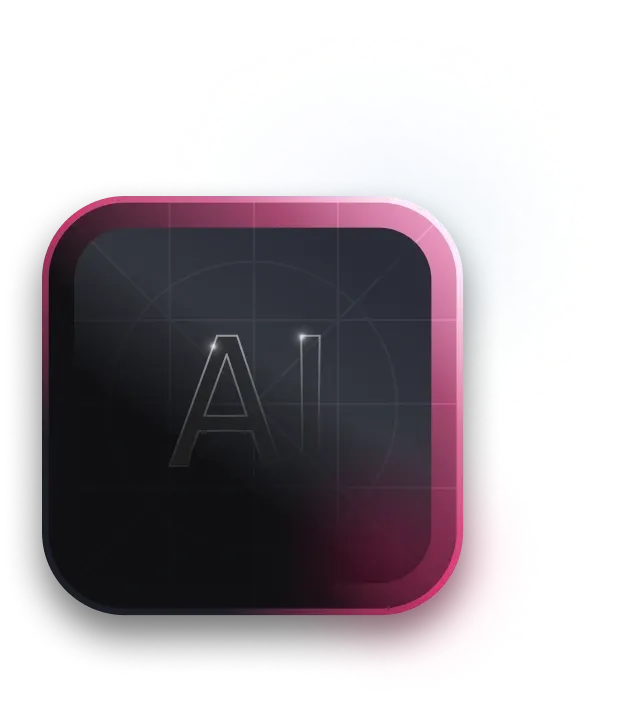Artificial intelligence has shown its capability to upgrade many business sectors. ChatGPT is an AI tool that creates conversations that are close to human-like. Today, we will tell you more about ChatGPT's nature and capabilities. The guide provides information about how to create a private ChatGPT with your own data and keep it functional in the future.
What Makes ChatGPT so Special?
ChatGPT is an artificial intelligence generative pre-trained transformer based on natural language processing. In other words, it is a chatbot that creates human-like conversations for various purposes.
According to a survey of American business leaders, ChatGPT is often involved in completing a wide range of work tasks such as code writing, content creation, customer support, meeting support, research purposes, and many others.
Let's see what makes ChatGPT so useful for various tasks.
ChatGPT capabilities
Working with this chatbot, you interact with a powerful model of generative artificial intelligence. NLP allows ChatGPT to keep conversations as natural and close to human-like as possible, answer questions, and even do complex tasks. A set of available tools easily covers most of the user's needs.
-
Web browsing: The pre-trained model has an impressive amount of information, but it doesn't mean it knows everything about specialized topics. Browsing with Bing helps the program search for extra information on the web.
-
Image recognition: The integrated GPT Vision model helps the chat recognize and interpret the uploaded image. It means ChatGPT can answer questions related to the provided image or use the information from the image for required tasks.
-
Generation: You can ask ChatGPT to create various texts. It can also create images on request with the help of the DALL-E tool.
-
Translation: Language recognition and translation abilities allow it to translate answers and text into various languages depending on the user's needs.
-
Analysis: ChatGPT can extract text from uploaded documents in text formats and search for the required information. It helps GPT to create different types of summaries. Also, there is an Advanced Data Analysis tool for customers with paid plans. It can work with Excel, CSV, and JSON documents to analyze data, respond to questions, create a visualization or request, or even fix minor errors.
-
Voice recognition and generation: You can use voice during the request for ChatGPT, and it will recognize it and react to commands. On the web version, ChatGPT can also read answers aloud.
-
Advanced capabilities: GPTs are created for specific purposes and may contain specific tools. Access to private data could enhance the combination described above to improve capabilities.
Public and private Chat GPT instances
There are two major instances of ChatGPT: public and private generative AI.
Public generation tools such as Bing, Bard, and ChatGPT are trained to work mostly with data accessible to the public. These tools are extremely helpful for content generation, providing information and recommendations on various topics and open dialogues. The main disadvantage is that all the information goes through public services, which causes privacy concerns.
Learn the essential steps to hire the best ChatGPT developers
A private instance of ChatGPT helps to use this technology on a daily work basis, and it also gives more control of context and data privacy. A private version can improve search capability by focusing on or considering not only public data but also the company's private data. Compared to public access, private instance creates a safer AI environment for company purposes, concentrates on business privacy, and is customized to specific needs.
Use cases for private ChatGPT instances
OpenAI private instance is useful in various cases due to its ability for customization. Thanks to its customization feature, it can be used for such purposes as:
- Education;
- Customer support;
- Various types of assistance;
- Documentation;
- Data search;
- Creation of content;
- Research;
- Data analyzes;
- Financial statements;
- Projections;
- Securing improvements.
With increasing scrutiny around data privacy, enterprises are shifting from public ChatGPT models to deploying private ChatGPT instances. A private instance of ChatGPT ensures that sensitive business information, proprietary data, and intellectual property remain under full control. Notably, companies like Samsung and others have already banned public ChatGPT use after data leak concerns, pushing the adoption of secure, private AI environments like Azure OpenAI Service or on-premises deployments.
What Do You Need for Setting up a ChatGPT Private Instance?
The simplest thing is that you need a team of experts who can create a private instance specifically for your needs and requirements. Requestum has long-term experience working with different projects involving artificial intelligence. The most vital factors for creation are technical skills, decent hardware and software, and correct infrastructure.
Let's review these key factors closer one by one.
Technical skills and knowledge
The following knowledge and skills will be especially useful during private instance setup:
- NLP;
- Python and other programming languages;
- Data structure;
- Algorithms;
- Machine learning;
- Data science;
- Cloud infrastructure (AWS, GCPm Microsoft Azure);
- Machine learning and natural language libraries;
- Frameworks;
- Data processing and pre-processing tools.
This set of skills combines a basic understanding of natural processing languages with deep knowledge of how to prepare your ChatGPT for work, train, and fine-tune it.
Our AI and Data Science Case Studies

Hardware and software for a private instance of ChatGPT
Reliable hardware and software are required to set up a private ChatGPT and ensure its proper operation. The quality of these will directly influence the level of performance and security.
Hardware requirements:
-
CPU: Multi-core processors will be the best choice. For small models, a modern multi-core CPU (like Intel Core i5/i7/i9 or AMD Ryzen 5/7/9) will work well, but for larger options, consider high-performance multi-core options such as Intel Core i9, Intel Xeon, AMD Ryzen, or AMD EPYC.
-
RAM: It depends on the use scale of your future AI model. We recommend using high-performance options starting from 64GB.
-
Storage: We recommend using high-capacity SSDs, as they can provide decent speed and faster data access. For small model options, consider at least 256GB. For bigger datasets, you may need SSDs from 512 GB and more.
-
GPU: Based on our experience, we recommend high-end options starting from 16GB. Try models such as NVIDIA GTX 1660 or RTX 2060 for a small level of use. NVIDIA RTX 3080/ RTX 3090/ A100 will be better options for bigger sizes. On-premises servers require high-performance NVIDIA Tesla V100/A100 to provide the required resources for the AI model.
-
Network: For any size AI model, you will need a stable high-speed internet connection to download model weights and dependencies. On-premises options will require reliable internal networking to ensure access to the model.
Software requirements:
- The latest versions of the operating systems will be the best option for developing purposes.
- We recommend to use Python 3.7 or later versions.
- Model requires libraries and frameworks such as PyTorch 1.0 (or later), TensorFlow 2.0 (or later), and Transformers library.
Step-by-Step Guide to Set Up a Private ChatGPT Instance
We divided the process of setting up a Private ChatGPT instance into several essential steps.
Step 1: Choose your hosting environment
When choosing between on-premises and cloud options (AWS, Azure, Google Cloud), you must consider costs, control possibilities, scalability, and security.
On-premises hosting pros:
- You have full control and customization possibilities;
- You don't have to rely on third-party providers;
- There is no shared infrastructure, so you can expect consistent performance;
- It is easier to comply with company regulations and standards.
On-premises hosting cons:
- You will have to spend costs on hardware, infrastructure, and ongoing maintenance;
- Scalability requires additional hardware and time for its installation;
- You need skilled IT experts for installation, maintenance, troubleshooting, and future updates;
- You need recovery plans and backups to reduce the risk of data loss.
Cloud hosting pros:
- Scaling is more cost-effective in this option;
- Cloud providers take care of maintenance;
- There is a wide range of available services to choose from;
- Systems include automatic backups and recovery options.
Cloud hosting cons:
- You depend on the cloud provider's service and policy, so you have less control over infrastructure;
- The data placed outside the control zone causes additional privacy concerns;
- Compliance with specific regulations may be more difficult as you need to verify certifications and policies with cloud providers;
- It requires monitoring and optimization to keep services in stable operation.
Microsoft Azure’s OpenAI Service and AWS both offer the flexibility to build your own chatgpt private instance with enterprise-grade security. In Microsoft-oriented environments, using Azure simplifies integration with tools like Microsoft Entra ID for identity control, Azure Key Vault for secrets management, and private networking via Private Link. This ensures your OpenAI private instance remains secure, scalable, and compliant with international data privacy standards.
Step 2: Prepare the environment
Once you choose your environment, you must prepare it for a future AI model. Install the required software. Make sure that you have a proper operating system with all updated and upgraded packages. You also need to have the latest possible Python version. Install Git for version control and Docker for containerization.
After this, create and activate a virtual environment to manage dependencies and separate your current project from others to prevent conflicts.
Step 3: Install the ChatGPT model
Now, it's time to download the ChatGPT model. You can use a pre-trained version or create it from scratch. The second option allows you to create your style of GPT, but it would require more cost and time to prepare and train it. Consider using a pre-trained model and adjusting it to your specific requirements.
Once it is downloaded, you can save it in a directory of your computer and set up the runtime environment.
Step 4: Configure security measures
You need to consider which data ChatGPT can process and provide the following security measures:
- Apply data encryption techniques to raise the security level;
- Develop authorization and authentication processes to make sure that you will give access only to authorized persons;
- Implement Single Sing-On (SSO);
- Set up the Multi-Factor Authentication (MFA);
- Ensure compliance with data protection regulations.
Enterprise deployments often enhance security by layering in role-based access control (RBAC), private networking, and customer-managed encryption keys. Services like Azure OpenAI allow organizations to use Customer Lockbox and Content Filters to limit exposure and align outputs with company policies. These tools are essential for organizations deploying a private ChatGPT instance where regulatory compliance and user accountability are paramount.
Let’s develop a software solution that perfectly fits your business
Step 5: Customize and integrate the ChatGPT model
Training and testing your model will help detect weak points and customize the AI to be closer to expectations.
For example, you must check how well the automated interaction works with CRM systems. GPT in customer support can be used to provide automated responses and recommendations for troubleshooting or forward requests to human agents. So, in this case, you will need to check the reactions and correctness of responses.
Training a ChatGPT with your data ensures that ChatGPT will understand the industry-specific language and context and will be able to provide accurate and relevant information on demand.
The following data is especially useful for training:
-
Text data: FAQs, manuals, chat logs, emails, and reports;
-
Structured data: Databases and spreadsheets;
-
Industry-specific elements: Terminology, description of processes, and workflows;
-
Customer data: Integration history, feedback, and inquiries.
Make sure that you feed relevant and accurate data with a high level of diversity to cover different scenarios. Split text into tokens and convert it to a consistent format. During the process, remove all irrelevant and low-quality data.
Fine-tune the model and evaluate its performance on a valid dataset. Integrate the ChatGPT with existing systems to improve current workflows. You should still monitor the performance and provide adjustments if necessary.
A key advantage of a ChatGPT private instance setup is the ability to integrate your own company data to deliver more contextually relevant responses. By using Retrieval-Augmented Generation (RAG) techniques or vector databases, your system can surface precise insights from internal documents, knowledge bases, or APIs. This process is central to understanding how to create a private ChatGPT with your own data, enabling tailored, enterprise-grade outputs aligned with your organization’s specific needs.
Step 6: Maintenance and updates
Regular updates and maintenance practices are the key factors for proper operation and high performance. Even after all the work is done, these procedures should stay part of the routine to ensure the model operates well.
Periodically update your language model to a newer version once they are released to keep the performance accurate and responsive. Update the knowledge base with new information and reports to ensure ChatGPT stays up-to-date with your company's latest data. Monitor response time and accuracy. Gather feedback from users to see if any areas require improvements. Prioritize and troubleshot common issues reported by users and regularly fix bugs.
Conclusion
Creating a private ChatGPT with your own data may be challenging, but it can open up new possibilities for your company. This AI tool offers a wide range of capabilities, and customization will help you adjust the model specifically to your needs and expectations. Choose the environment where you want to build it, provide the required hardware and software, and create a step for your ChatGPT tool.
If you are considering adopting ChatGPT for your company to streamline operations and workflow optimization, contact us. The Requestum team will gladly offer you help and launch the proper ChatGPT model.

Our team is dedicated to delivering high-quality services and achieving results that exceed clients' expectations. Let’s discuss how we can help your business succeed.


SHARE: